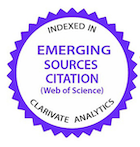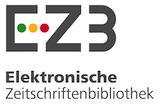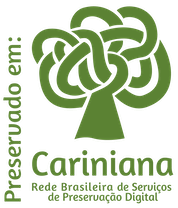Disponibilidade de forragem e ganho de peso de caprinos em caatinga enriquecida com Urochloa trichopus (Hochst.) Stapf submetida ao diferimento e a adubação fosfatada
DOI:
https://doi.org/10.1590/1809-6891v22e-70080Resumo
Objetivou-se avaliar a disponibilidade de forragem e desempenho de caprinos em Caatinga raleada e enriquecida com Urochloa
trichopus submetida ao diferimento de pastejo e doses de adubação fosfatada. Foram utilizados 24 caprinos mestiços F1 (Boer x
SPRD), inteiros, com peso corporal de 15,0 ± 2,6 kg, distribuídos em quatro piquetes (n = 6) de acordo com o peso vivo, idade e
estado fisiológico. Os animais realizaram pastejo na Caatinga, com lotação contínua, sendo recolhidos e colocados em baias
individuais permanecendo nesse local durante a noite. No experimento para avaliar desempenho animal foi usado delineamento
blocos casualizados com 4 tratamentos (0, 11, 33 e 60 dias de diferimento) e seis repetições. Para determinação produção de massa
seca e composição florística foi usado a adubação fosfatada nas dosagens de x P2O5 em um delineamento em blocos casualizados
com cinco tratamentos, 0, 30, 60, 90 e 120 kg de P2O5 com 4 repetições. A adubação fosfatada promoveu efeito para a composição
florística de dicotiledôneas e U. trichopus (P<0,05). Houve efeito do diferimento de pastagem para o peso final dos caprinos, com
o menor peso (20,40 kg) observado aos 60 dias de diferimento (P<0,05). A adubação fosfatada não aumentou a produtividade de
matéria seca. O diferimento não é indicado para uma área de vegetação da caatinga, pois mesmo com a vedação, no período seco
ocorreu uma diminuição na disponibilidade e na qualidade da forragem, acarretando um menor aporte dos animais.
Palavras–chave: Disponibilidade de forragem; ganho de peso; pastagem nativa; semiárido
Downloads
Referências
Marengo JA, Alves LM, Alvala RCS, Cunha AP, Brito S, Moraes OLL. Climatic characteristics of the 2010-2016 drought in the semiarid Northeast Brazil region. An. Acad. Bras. Ci. 2018; 90(2):1973-1985. Disponível em: https://doi.org/10.1590/0001-3765201720170206.
Castanho ADA, Coe M, Andrade EM, Walker W, Baccini A, Campos DA, Farina M. A close look at above ground biomass of a large and heterogeneous seasonally dry tropical forest - Caatinga in North East of Brazil. An. Acad. Bras. Ci. 2020; 92(1):1 – 18. Disponível em: https://doi.org/10.1590/0001-3765202020190282.
Souza MA, Souto JS, Andrade AP, Araujo KD, Gomes DL. Contribution of litter and leaf decomposition of Byrsonima gardneriana. Floresta Amb. 2019; 26(1):1 - 10. Disponível em: https://doi.org/10.1590/2179-8087.037616.
Ribeiro KA, Alencar CMM. Desenvolvimento territorial e a cadeia produtiva da caprinovinocultura no semiárido baiano: o caso do município de Juazeiro-BA. Rev. Bras. Ass. Reg. Urb. 2018; 4(1):144-179. Disponível em: https://doi.org/10.18224/baru.v4i1.6571.
Embrapa Caprinos e Ovinos. Pesquisa Pecuária Municipal 2017: efetivo dos rebanhos caprinos e ovinos. Boletim do centro de inteligência e mercado de caprinos e ovinos n. 5, 1st ed. Sobral: Embrapa; 2018. 13p.
Cardoso AS, Barbero RP, Romanzini EP, Teobaldo RW, Ongaratto F, Fernandes MHMR, Ruggieri AC, Reis RA. Intensification: A key strategy to achieve great animal and environmental beef cattle production sustainability in brachiaria grasslands. Sustain. 2020; 12(16):1 – 17. Disponível em: https://doi.org/10.3390/su12166656.
Santos AD, Fonseca DM, Sousa BML, Santos MER, Carvalho AN. Pasture structure and production of supplemented cattle in deferred signalgrass pasture. Ci. Anim. Bras. 2020; 21(43578):1–13. Disponível em: https://doi.org/10.1590/1809-6891v21e-43578.
Sousa BML, Santos MER, Amorim PL, Silveira MCT, Rocha GO, Carvalho AN. Effect of nitrogen fertilization on structure and tillering dynamics of Piata palisade grass during the deferment period. Semina: Ci. Agr. 2019; 40(1):249-258. Disponível em: https://doi.org/10.5433/1679-0359.2019v40n1p249.
Coelho, VAT.; Souza, CG.; Nascimento, ES.; Lacerda, LG.; Cardoso, PA. Deficiências de macronutrientes em Abobrinha Italiana (Cucurbita pepo L.): caracterização de sintomas e crescimento. Res. Soc. Dev. 2020; 9(3):1–19. Disponível em: http://dx.doi.org/10.33448/rsd-v9i3.2269.
Bononi L, Chiaramonte JB, Pansa CC, Moitinho MA, Melo IS. Phosphorus-solubilizing Trichoderma spp. from Amazon soils improve soybean plant growth. Scient. Rep. 2020; 10(2858):1–13. Disponível em: https://doi.org/10.1038/s41598-020-59793-8.
Mugabe W, Moatswi B, Nsinamwa M, Akanyang L, Dipheko K, Matthews N, Nazar M, Shah IA, Shuaib M and Shah AA. 2017. Dry Matter Biomass Productivity and Composition of Grasses along Grazing Gradient in Fenced and Unfenced Grazing Areas of the Gaborone North, Botswana. Journal of Animal Research and Nutrition 2 (2:11): 1-6. http://doi:10.21767/2572-5459.100031.
Coêlho JJ, Mello ACL, Santos MVF, Dubeux Junior JCB, Cunha MV, Lira MA. Prediction of the nutritional value of grass species in the semiarid region by repeatability analysis. Pesq. Agropec. Bras. 2018; 53(3):378-385. Disponível em: https://doi.org/10.1590/S0100-204X2018000300013.
Alvares CA, Stape JL, Sentelhas PC, Gonçalves JLM, Sparovek G. 2013. Köppen’s climate classification map for Brazil. Meteorologische Zeitschrift 22 (6): 711-728. Disponível em: http://doi.org/10.1127/0941-2948/2013/0507.
Brasil. Ministério da Agricultura e Reforma Agrária. Secretaria nacional de irrigação. Departamento nacional de meteorologia. Normas Climatológicas, Brasília, 19611990. 84p. Portuguese.
Santos HG, Jacomine PKT, Anjos LHC, Oliveira VA, Lumbreras JF, Coelho MR, Almeida JA, Cunha TJF, Oliveira JB. Sistema brasileiro de classificação de solos, 5th ed. Brasília: Embrapa; 2018. 356p. Disponível em: https://www.embrapa.br/busca-de-publicacoes/-/publicacao/1107206/sistema-brasileiro-de-classificacao-de-solos.
LASAG. Laboratório de Solos e Água. Universidade Federal de Campina Grande, Centro de Saúde e Tecnologia Rural (UFCG/CSTR). Patos. 2014.
Araújo Filho JA. Manejo pastoril sustentável da Caatinga, 22th ed. Recife: Projeto Dom Helder Câmara; 2013. 200p. Disponível em: http://portalsemear.org.br/wp-content/uploads/2018/03/ManejoPastorilSustentavelCaatinga2.pdf.
AOAC. Association of Official Analytical Chemists. Official methods of analysis, 20th ed. Washington, D.C.: Latimer Jr., G.W.; 2016. 3172p.
Bezerra RCA, Leite MLMV, Almeida MCR, Lucena LRR, Simões VJLP, Bezerra FJSM. Características agronômicas de Urochloa mosambicensis sob diferentes níveis de fósforo e nitrogênio. Mag. 2019; 30(1):268-276. Disponível em: https://magistraonline.ufrb.edu.br/index.php/magistra/article/view/738/393.
Araújo MM, Santos RV, Vital AFM, Araújo JL, Farias JA. Uso do fósforo em gramíneas e leguminosas cultivadas em neossolo do Semi-Árido. Agropec. Cient. Semi-Árido. 2010; 6(1):40-46. Disponível em: http://dx.doi.org/10.30969/acsa.v6i1.66.
Hallama M, Pekrun C, Lambers H, Kandeler E. Hidden miners – the roles of cover crops and soil microorganisms in phosphorus cycling through agroecosystems. Plant Soil. 2019; 434(1):7–45. Disponível em: https://doi.org/10.1007/s11104-018-3810-7.
Weeks Jr. JJ, Hettiarachchi GM. A review of the latest in phosphorus fertilizer technology: possibilities and pragmatism. J. Env. Quality. 2019; 48(5):1300-1313. Disponível em: https://doi.org/10.2134/jeq2019.02.0067.
Pereira Filho JMP, Silva AMA, Cézar MF. Manejo da Caatinga para produção de caprinos e ovinos. Ver. Bras. Saúde Prod. Anim. 2013; 14(1):77-90. Disponível em: https://www.scielo.br/j/rbspa/a/733ThmLwSpcP7B7vxVw6qMy/?format=pdf&lang=pt.
Menezes T, Carmo R, Wirth R, Leal IR, Tabarelli M, Laurênio A, Melo FPL. Introduced goats reduce diversity and biomass of herbs in Caatinga dry forest. Land Degr. Dev. 2020; 31(16):1–40. Disponível em: https://doi.org/10.1002/ldr.3693.
Santos JP, Araújo EL, Alburquerque UP. Richness and distribution of useful woody plants in the semi-arid region of northeastern Brazil. J. Arid Env. 2008; 72(5):652-663. Disponível em: https://doi.org/10.1016/j.jaridenv.2007.08.004.
Carvalho Júnior AM, Pereira Filho JM, Silva RM, Cezar MF, Silva AMA, Silva ALN. Efeito da suplementação nas características de carcaça e dos componentes não-carcaça de caprinos F1 Boer x SRD terminados em pastagem nativa. Rev. Bras. Zootec. 2009; 38(7):1301-1308. Disponível em: https://doi.org/10.1590/S1516-35982009000700020.
Pereira Filho JM, Vieira EL, Kamalak A, Silva AMA, Cezar MF, Beelen PMG. Ruminal disappearance of Mimosa tenuilfora hay treated with sodium hidroxide. Arch. Zootec. 2007; 56(216):959-962. Disponível em: https://www.redalyc.org/pdf/495/49521619.pdf.
Santos JPR, Fonseca DM, Balbino EM, Monnerat JPIS, Silva SP. Capim-braquiária diferido e adubado com nitrogênio: produção e características da forragem. Rev. Bras. Zootec. 2009; 38(4)650-656. Disponível em: https://doi.org/10.1590/S1516-35982009000400009.
Silva PHF, Carvalho CAB, Malafaia P, Garcia FZ, Barbero RP, Ferreira RL. Morphological and structural characteristics of Urochloa decumbens Stapf. deferred pasture grazed by heifers under two periods of protein-energy supplementation. Acta Scient. Anim. Sci. 2019; 41(44425):1–9. Disponível em: https://doi.org/10.4025/actascianimsci.v41i1.44425.
Janusckiewicz ER, Casagrande DR, Raposo E, Bremm C, Reis RA, Ruggieri AC. Sward structure and ingestive behavior of cows in tropical pastures managed under different forage allowances. Arq. Bras. Med. Vet. Zootec. 2019; 71(6):2009-2016. Disponível em: https://doi.org/10.1590/1678-4162-10913.
Rocha GO, Santos MER, Vilela HH, Carvalho BHR, Sousa BML, Fagundes JL, Backes AA, Fontes PTN. Structure of piatã palisadegrass deferred for two periods and fertilised with nitrogen. Semina: Ci. Agr. 2020; 41(3):995-1006. Disponível em: http://dx.doi.org/10.5433/1679-0359.2020v41n3p995.
Pereira Filho JM, Silva, AMA and Cezar, MF. 2013. Manejo da Caatinga para produção de caprinos e ovinos. Revista Brasileira de Saúde e Produção Animal 14 (1): 77–90. https://doi.org/10.1590/S1519-99402013000100010.
Neves FP, Carvalho PCF, Nabinger C, Jacques AVA, Carassai IJ, Tentardini F. Estratégias de manejo da oferta de forragem para recria de novilhas em pastagem natural. Revista Brasileira de Zootecnia, v. 38, n. 8, p. 1532-1542, 2009. Disponível em: https://doi.org/10.1590/S1516-35982009000800018.
Bartolomé J, Franch J, Plaixats J, Seligman N. G. Diet selection by sheep and goats on Mediterranean heath-woodland range. Journal of Range Management, v. 51, n. 4, p. 383-391, 1998. Disponível em: https://doi.org/10.2307/4003322.
Formiga LDAS, Pereira Filho JM, Silva AMA, Oliveira NS, Soares DC, Bakke OA. Forage supply in thinned Caatinga enriched with buffel grass (Cenchrus ciliaris L.) grazed by goats and sheep. Acta Scientiarum. Animal Sciences., v.34, p.189 - 195, 2012. Disponível em: https://doi.org/10.4025/actascianimsci.v34i2.12548.
Formiga LDAS, Pereira Filho JM, Oliveira NS, Silva AMA, Cézar MF, Soares DC. Valor nutritivo da vegetação herbácea de caatinga enriquecida e pastejada por ovinos e caprinos. Revista Brasileira de Saúde e Produção Animal., v.12, p.403 - 415, 2011. Disponível em: https://www.bvs-vet.org.br/vetindex/periodicos/revista-brasileira-de-saude-e-producao-animal/12-(2011)-2/valor-nutritivo-da-vegetacao-herbacea-de-caatinga-enriquecida-e-pastej/.
Leite ER, Cezar MF, Araújo Filho JA. Efeitos do melhoramento da Caatinga sobre os balanços protéico e energético na dieta de ovinos. Ciência Animal, 12(1)67-73, 2002. Disponível em: https://ainfo.cnptia.embrapa.br/digital/bitstream/item/35689/1/API-Estudo-do-melhoramento-da-caatinga.pdf.
Araújo Filho JA, Gadelha JA, Leite ER. et al. Composição botânica e dieta de ovinos e caprinos em pastoreio combinado na região dos Inhamuns, Ceará. Revista Brasileira. de Zootecnia, v.25, n.3, p.383-395, 1996. Disponível em: https://ainfo.cnptia.embrapa.br/digital/bitstream/item/53756/1/API-Composicao-botanica.pdf.
Downloads
Publicado
Como Citar
Edição
Seção
Licença
Copyright (c) 2022 Ciência Animal Brasileira

Este trabalho está licenciado sob uma licença Creative Commons Attribution 4.0 International License.
Autores que publicam nesta revista concordam com os seguintes termos:
- Autores mantém os direitos autorais e concedem à revista o direito de primeira publicação, com o trabalho simultaneamente licenciado sob a Licença Creative Commons Attribution que permite o compartilhamento do trabalho com reconhecimento da autoria e publicação inicial nesta revista.
- Autores têm autorização para assumir contratos adicionais separadamente, para distribuição não-exclusiva da versão do trabalho publicada nesta revista (ex.: publicar em repositório institucional ou como capítulo de livro), com reconhecimento de autoria e publicação inicial nesta revista.
- Autores têm permissão e são estimulados a publicar e distribuir seu trabalho online (ex.: em repositórios institucionais ou na sua página pessoal) a qualquer ponto antes ou durante o processo editorial, já que isso pode gerar alterações produtivas, bem como aumentar o impacto e a citação do trabalho publicado (Veja O Efeito do Acesso Livre).






























